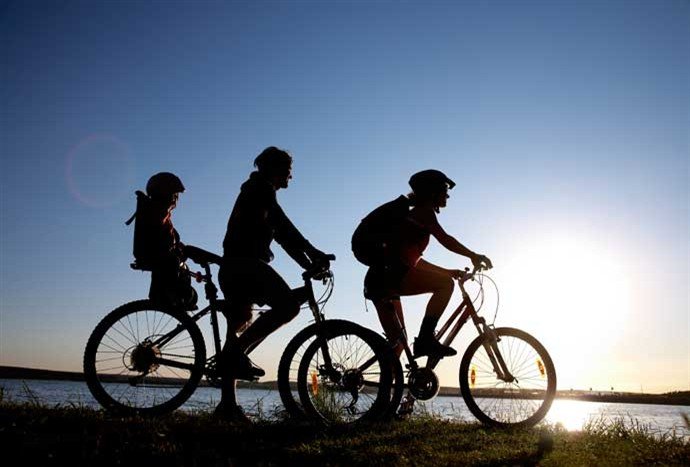Hiking allows us to know almost exclusively Isla de Lobos since there are no vehicles.
The activity that we propose for a comprehensive knowledge of the island is hiking, walking through Lobos on the trails set up for it and feeling the history at every step.
If we can take a mountain bike and do the tour a little faster. The firm is dirt, stony in some sections and sandy in others, but generally easy to do.

The description that we are going to propose of the route will be in the opposite direction to the needles of the clock.
Disembarking at the small breakwater of the Isla de Lobos dock, we have the feeling of arriving in an inhospitable place with little possibility of human life. As we move off the dock, some shady benches mark our entry into this small island. We also see life-size sculptures of sea lions (monk seal) recreating the ancient presence of these animals. Next to it we have the bust of Josefina Plá, poet and writer born in Isla de Lobos, which indicates the not-so-distant human life on the islet.
We look at the Isla de Lobos map to decide in which direction we are going to make the trail, which is circular and goes around the island. Going through it one way or the other is our personal decision, not varying the difficulty or the perceptibility of the island’s singularities.
First, this sense allows us to reserve food at the El Puertito restaurant, secondly, we leave the bath in the crystalline waters of La Concha Beach until the end.

We take to the right of the Interpretation Center of the Islote de Lobos Natural Park
The center that we can visit and get an idea of the island with its interior panels. We walked along the path towards the houses of El Puertito. We cross it on its southern part, through narrow streets between stone and concrete huts. We pass in front of the counter of the Restaurant ‘Antoñito el Farero’, to continue forward observing those interior lagoons where the fishermen arrive with the catch of the day and that right there they clean the fish leaving a swarm of seagulls swarming around the fish remains.
We left the houses of El Puertito to the north
Leaving its smiling inhabitants behind to start a somewhat stony and saline path. A few meters we have a fork. Actually the difference in meters between one path and the other is not important, and they end in 700 meters at the same point. If we take the path to the right, towards the northeast, we will approach the coast of the island, bordering the Atalaya Grande and arriving at Las Lagunitas from the southeast. If we turn the path to the left, we will pass through a large old lime kiln, and then we will reach Las Lagunitas.

An ecosystem that has the characteristic of having seawater in the subsoil due to infiltration
At the junction of these two paths in sections in the Las Lagunitas salt marsh, in addition to lagoons that grow in size with high tides and decrease with low tides, leaving these plant communities in an intermittent margin that only they are capable of supporting. The vegetables that live here endure immersion and this salinity is called salty (Sarcocornia sp., Artrocnemun sp.) (Limonium sp) one of them is an exclusive plant of this salt marsh and therefore of this Isla de Lobos. The Lobos Immortelle (Limonium ovalifolium canariense) It is a unique species and relegated to this corner of the world that we must protect with the utmost tenacity and special affection.
The path crosses the salt marsh heading north, ending the section with a slight ascent next to a lime scale. Once up, we must take a look back to see the salt marsh in its entirety.

We continue with the north direction along a path of jable, a heavy journey of traveling through the softness of this white sand when stepping on it and that seems more typical of the Saharan desert than of oceanic islands. In a few meters we pass over a cobbled channel that if we turn east, over it, will take us to the largest cistern on the island. This channel was paved to generate rainwater runoff and thus be able to store it, a very valuable liquid on this island without fresh water.
Botabical Garden del Desierto
The walk on the sand and with the horizon interrupted by various basaltic mounds, we move north. We arrived at an area of abandoned buildings, the Hoya del Cagadero, a place where the operations center of the Desert Botanical Garden began to be built. A project from the late sixties that was finally abandoned, leaving its mark on the island. If you look closely, there are dry-stone wall pens, runoff water catchment channels, and even bullet holes in the hut walls. Bullets that were surely fired with the field maneuver exercises of the legion that was installed for many years in Fuerteventura





Comments